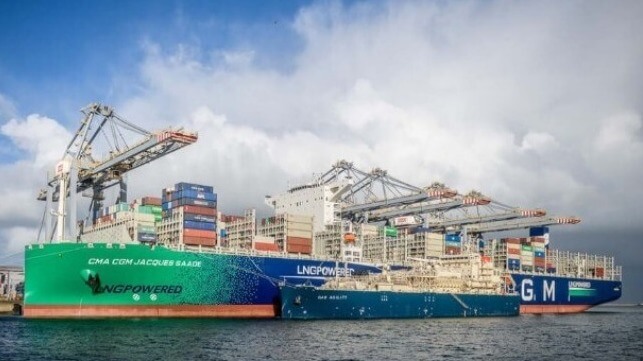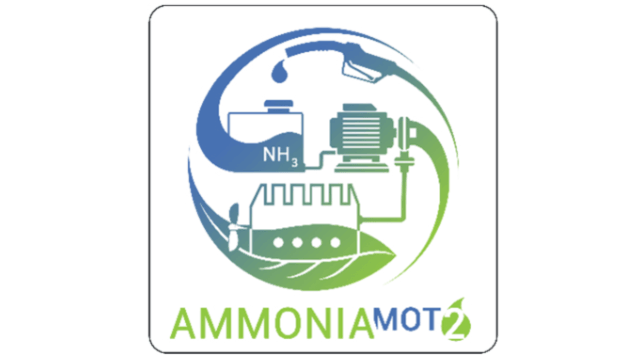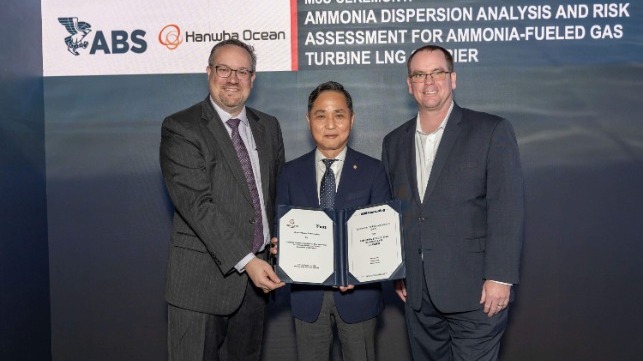CMA CGM Group and SUEZ Partner to Produce Biomethane Fuel

French shipping major CMA CGM Group is taking another step to create fuel as part of its efforts to decarbonize its operations and to protect its more than $18 billion investment in a new generation of vessels. CMA CGM reports it signed an agreement with French waste-to-energy company SUEZ that calls for the production in Europe of up to 100,000 tones of biomethane per year by 2030.
Supply of new alternative fuels continues to be a major concern for the entire shipping industry and other sectors that look to the alternatives to make it possible for the companies to meet the emerging requirements for lowered carbon emissions. CMA CGM Group CEO Rodolphe Saade said the agreement with SUEZ “marks a major step forward,” in the efforts to create a source of biomethane fuel. He said it would enable support for the biomethane sector dedicated to the shipping industry and strengthen energy independence for France and Europe.
“The aim of this collaboration between two complementary players is to establish a long-term industrial partnership on biomethane, a renewable fuel produced through waste recovery, to help decarbonize shipping in Europe,” the companies said reporting the agreement signed on October 18.
Under the terms of the memorandum of understanding, CMA CGM and SUEZ will create a joint investment structure with initial funding of €100 million ($108 million at current conversion rates) for a first stage to develop biomethane production facilities by 2030. They said the sites to be initially located in Europe would supply both CMA CGM Group and other companies in the sector.
Together they plan joint research and development initiatives aimed at designing innovative technologies for the production of biofuels. In particular, they will focus on a hydrothermal gasification process and look to build on SUEZ’s expertise in waste-to-energy.
Creating a supply of biomethane and other synthetic non-carbon fuels is a critical part of the group’s decarbonization strategy. CMA CGM highlights that it is investing $18 billion in orders for 131 vessels capable of using low-carbon energies (biomethane, biomethanol, and synthetic fuels), which will be operational by 2028. CMA CGM Group is also working alongside energy providers to develop production facilities and supply chains for these fuels.
The announcement highlights that SUEZ has extensive expertise in the production of local and sustainable energy and secondary raw materials from waste to support the decarbonization of local authorities and industrial customers. SUEZ reports it converts five million tonnes of waste into energy every year and produced 382 GWh of biomethane in 2023.
Ammonia-Powered Engine to be Developed for Medium-Speed Marine Applications

[By: MAN Energy Solutions]
Having designed and tested the first two-stroke ammonia engine, MAN Energy Solutions has now announced launching the ‘AmmoniaMot 2’ research project. Initiated by MAN with partners from industry and research institutes, the project aims to develop a four-stroke, medium-speed, dual-fuel test engine that runs on ammonia.
Supported by the German Federal Ministry for Economic Affairs and Climate Action (BMWK), the project commenced in August 2024 and is scheduled to run for 3½ years. It is the successor to the ‘AmmoniaMot’ project, which dealt with fundamental investigations concerning ammonia combustion in internal-combustion engines and that ended in May 2024. Its promising results form the basis for the even more ambitious AmmoniaMot 2, once again led by MAN Energy Solutions with the same partners from the original project and supplemented by some new, namely: WTZ Roßlau gGmbH, Woodward L’Orange GmbH, the University of Munich (SFM), Neptun Ship Design GmbH, the University of Rostock (LKV), GenSys GmbH and MNR GmbH.
Alexander Knafl, Head of Engineering R&D Four-Stroke, MAN Energy Solutions: said: “For MAN Energy Solutions, this project is the next logical step after the previous AmmoniaMot project. It perfectly supports our own strategy to develop sustainable technologies and we very much appreciate the opportunity to work with our distinguished partners. For us, the path to decarbonising the maritime industry starts with decarbonising fuels and, in this context, ammonia is an excellent candidate as it is carbon-free and thus avoids CO2-emissions when used as a fuel in our engines.”
MAN Energy Solutions sees the future application of ammonia-powered, four-stroke engines primarily in newbuild projects without passengers, such as cargo or special vessels, or as an auxiliary GenSet for large ammonia-powered two-stroke vessels. For passenger ships such as ferries and cruise liners, MAN Energy Solutions is currently focusing on methanol as that segment’s fuel of the future and is already developing corresponding engines in parallel.
Christian Kunkel, Head of Combustion Development, Four-Stroke R&D, MAN Energy Solutions, added: “In the original AmmoniaMot project, we laid a strong foundation with our excellent partners and proved that ammonia is a suitable fuel for medium-speed applications with the potential to reduce greenhouse-gas emissions by 90-95% while complying with existing emission regulations. I am more than excited to take the next step with our partners in AmmoniaMot 2. There is no doubt but that ammonia will become an important carbon-free fuel and thus not just contribute to the decarbonisation of the maritime sector.”
Partner roles
- MAN Energy Solutions is responsible for the entire engine concept for the ship application, including the exhaust-gas aftertreatment system;
- WTZ Roßlau gGmbH will develop the combustion concept for the engine and test the injection components under realistic conditions;
- Woodward L’Orange GmbH will develop the injector prototype for the engine;
- The University of Munich (SFM) is responsible for the 3D-CFD combustion simulation;
- Neptun Ship Design GmbH will develop the demonstrator of the high-pressure fuel-supply module for ammonia (CAPSAM), taking into account the safety requirements aboard ships;
- The University of Rostock (LKV) will conduct experiments for the injection technology, exhaust-gas aftertreatment concept, lubrication of ammonia engines and will develop 0D/1D simulation models on the basis of these experiments;
- GenSys GmbH will be responsible for the construction of the demonstrator of the high-pressure fuel-supply module for ammonia (CAPSAM);
- MNR GmbH will develop the double-walled fuel system and the compensator for the high-pressure fuel piping system for ammonia.
The products and services herein described in this press release are not endorsed by The Maritime Executive.
ABS Comprehensive Ammonia Dispersion Safety Evaluation Sent to Hanwha Ocean

[By: ABS]
ABS has completed an industry-leading safety evaluation of ammonia dispersion on board an ammonia-fueled gas turbine LNG carrier design from Hanwha Ocean.
ABS, in collaboration with Hanwha Ocean, conducted computational fluid dynamics simulations that modeled different ammonia release scenarios due to accidental leakages from the engine room, the pipeline and the bunkering stations on deck. The study is one of the most comprehensive in the industry, using multiple ammonia release scenarios.
The analyses found that the system complied with applicable ABS Rules regarding the toxicity and risks of accumulated ammonia gas. The three-dimensional, high-fidelity simulation results can also help Hanwha Ocean with improved ventilation arrangements, vent mast locations, gas release speeds and placement of air intakes for the manned spaces to further reduce risks in the detailed design stage.
ABS subsidiary, ABSG Consulting Inc., a leading global risk management company, conducted a quantitative risk assessment, helping to provide a better understanding of the likelihood of an incident and insight into potential threats, enabling Hanwha Ocean to design its mitigation plans accordingly.
“This project allowed ABS to combine its world leading modeling and simulation capability with our deep insight into the application of ammonia as a marine fuel. The toxicity of ammonia is a safety challenge and so understanding its behavior in the event of a leak is a critical step toward enabling its wider adoption by the industry. Our analysis will help Hanwha Ocean continue to optimize its design to identify areas for enhancement and mitigate risks,” said Patrick Ryan, ABS Senior Vice President and Chief Technology Officer.
Shon Young-chang, CTO and Head of Hanwha Ocean’s Product & Technology Strategy, said: “At Gastech 2024, we received recognition from ABS, the leading Classification Society, for our eco-friendly ship technologies, significantly boosting Hanwha Ocean's decarbonization vision. We will do our utmost to ensure that shipowners can confidently choose Hanwha Ocean's products.”
ABS provides industry-leading guidance on the application of ammonia as a marine fuel. Learn more here and download a copy of the latest publication, ABS Ammonia Bunkering: Technical and Operational Advisory here.
The products and services herein described in this press release are not endorsed by The Maritime Executive.
No comments:
Post a Comment